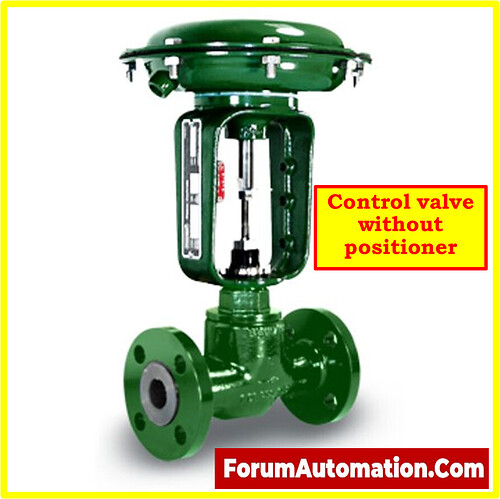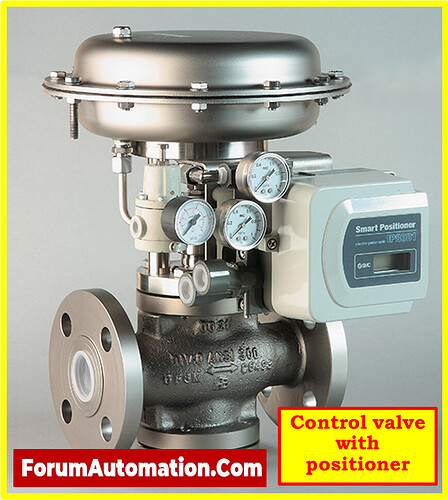Can we use a control valve without positioner ?
- Yes, it is possible to use a control valve without a positioner.
- A control valve is a crucial component in industrial processes that regulates the flow, pressure, or level of a fluid. While a positioner enhances the performance of a control valve, there are situations where it may not be necessary or practical to use one.
- When a control valve is used without a positioner, it relies solely on its inherent characteristics to respond to changes in the process conditions.
- The valve’s design and actuator are responsible for positioning the valve based on the input signal received from the process controller.
This arrangement can be suitable in certain cases, such as:
Simple Control Systems:
- In basic control systems where high precision is not required, using a control valve without a positioner can be sufficient.
- If the control requirements are straightforward and the process conditions are relatively stable, a positioner may not be necessary.
Self-Regulating Valves:
- Some control valves, known as self-regulating valves, have inherent characteristics that enable them to respond to changes in process conditions without external assistance.
- These valves automatically adjust their position based on the process parameters they are controlling. Examples include pressure-reducing valves or temperature control valves.
Cost Considerations:
- Positioners add complexity and cost to the control valve system. They require additional installation, calibration, and maintenance.
- In cases where the benefits of using a positioner do not justify the associated costs, a control valve without a positioner may be preferred.
- While a control valve without a positioner can be used in certain scenarios, it’s important to note that the use of a positioner can significantly enhance control performance and precision.
- A positioner is an accessory that works in conjunction with a control valve to ensure accurate and responsive control.
What are the uses of control valve with positioner?
Some key uses of control valves with positioners are:
Improved Control Accuracy:
- A positioner provides precise control by accurately positioning the valve based on the input signal received from the process controller.
- It eliminates the effect of friction, hysteresis, and other non-linearities, allowing for tight control of process variables.
Enhanced Stability and Response:
- Positioners help improve the stability and response time of control loops.
- They enable faster and more precise adjustments of the valve position, reducing overshoot, undershoot, and oscillations.
- This leads to improved process control and reduced variability in the system.
Compensation for Variables:
- Positioners can compensate for various variables that affect valve performance, such as changes in supply pressure or temperature.
- By continuously monitoring and adjusting the valve position, the positioner ensures that the valve responds correctly to the control signal and maintains the desired process conditions.
Diagnostic and Monitoring Capabilities:
- Many modern positioners offer advanced diagnostic features and monitoring capabilities.
- They can provide valuable information about valve performance, including valve travel, air pressure, and feedback signals.
- This data can be used for predictive maintenance, troubleshooting, and optimizing control system performance.
Compatibility with Complex Control Strategies:
- Positioners are essential for implementing advanced control strategies such as cascade control, split-range control, or ratio control.
- These strategies require precise control of multiple valves, and positioners enable accurate coordination between them.
While it is possible to use a control valve without a positioner in certain cases, a positioner offers numerous benefits in terms of control accuracy, stability, response time, compensation for variables, diagnostic capabilities, and compatibility with complex control strategies.
The decision to use a control valve with or without a positioner depends on the specific control requirements, process conditions, and cost considerations.

